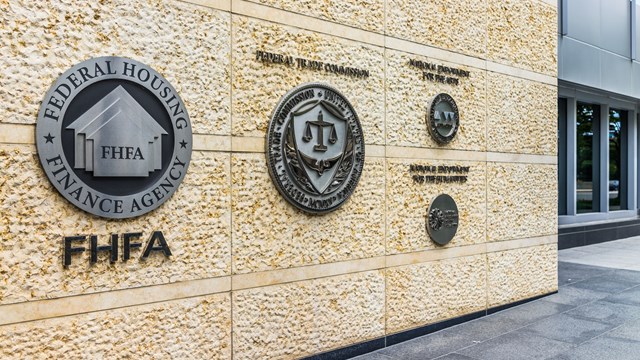
Sometimes it’s a shady developer or a crooked contractor. Sometimes it’s the unit owner you just can’t get rid of. There are times when it’s actually nobody’s fault and just the Byzantine nature of some state or federal laws, but the lawsuits and legal actions that condominium lawyers run across in their careers are often full of surprises and frustrations.
Michael Feniger, an attorney and co-founder of the law firm of Feniger & Uliasz in Manchester, New Hampshire, recalls a community that had to deal with “an owner who refused to pay assessments because she insisted that members of the condo board were sneaking into her unit and trying on her clothes… The issue escalated until it became a collection case.”
He explains that in New Hampshire any foreclosure action is handled as a “sheriff’s sale.” Used in a number of states, this involves a court order instructing the county sheriff's department to hold a public auction for the sale of the property. “The sheriff’s sale,” notes Feniger, “includes a one-year right of redemption, which in this case had gone by, and title to the unit had passed to the association — but the resident was not about to leave the premises and she found a lawyer who seemed to be just as crazy as she was, and the two of them were fighting like little kids.
“This lawyer raised a question of title,” he continues, “so the district court suspended proceedings… then it goes to superior court and the resident is ordered to pay rent. But it turns out she has ‘homestead’ protection and a superior court judge gives her title.”
It became one thing after another in holding up any progress, he relates, as ”she accrued $150,000 of back rent and attorney fees that were charged to her…” and the district court volleys with the supreme court over an eviction filing. The supreme court then changed its ruling, giving title to the association and ordering her to pay rent. Noting that “she hasn’t paid an assessment for years,” Feniger says, at one point “she took almost $40,000 out of an account before the bank could secure funds… and traveled abroad, supposedly for medical treatments.”
He admits that ultimately, “It’s really complications around the Homestead Act” that would keep this case unresolved. (See side bar on page 15)
Problems Can Back Up
In another situation, Feniger had an opportunity to do a little sleuthing that ultimately stymied a fraudulent claim. A building in a condo community in eastern Massachusetts had a problem with sewerage backing up into
some units. “A professional couple in one unit filed a lawsuit (against the association) seeking a cash payout, claiming that they had been forced out of the house and had needed to completely renovate the bathroom. The first thing I did was go see the bathroom, since it seemed suspicious that the other units that were affected had suffered minimal or no damage. I took photos and noticed that the walls and baseboards had not been replaced—there were even old picture holes in the walls.”
“They had taken photos of the supposed damage and had invoices of all this repair work, again questionable since it indicated that this extensive renovation had been completed in just one day,” he continues. “The cause of the problem was finally discovered when the plumber who was investigating… found a broomstick in the vent pipe. Then, I tracked down the couple’s contractor who admitted he had never finished the work.
“Finally, just before the court date,” Feniger says, “the couple fired their attorney and withdrew the case. They must have realized that they’d get nothing [in a payment] and that they could be charged with fraud.”
Standing Ground
Thomas Moriarty, a partner at the law firm of Marcus, Errico, Emmer & Brooks (MEEB) in Braintree, Massachusetts, relates a situation in which the defendant ultimately—and reluctantly—settled for a $12.25 million judgment in a building defect case that could have cost them $38 million. “This was a new, luxury high-rise with over 200 units, completed around 2007. Almost all units were sold and the property had already turned over to association control.
“What happened,” he relates, “is that some residents, as soon as the air conditioning was turned on, were experiencing high humidity along with smoke and cooking odors from adjoining units. They also noticed that doors weren’t closing properly due to air pressure. The building was behaving like a vacuum. The association hired an engineer who discovered that the exhaust airflow was exceeding the inflow, so there was a deficiency in the makeup air supply. The inflow air was compounded in the common areas, and trapped in the corridors. As a result, individual units were sucking untreated air from the outside.”
After extensive research and calculation, Moriarty reports, “The engineer who was hired to investigate figured out that the clothes dryers in each unit, which all exhausted to the outside, had not been figured into the original calculations [for HVAC design].” The challenging thing about the situation, he contends, “is that the manifestations were random and some owners were not affected at all. It depended on who was home and when, and whether there was smoking or cooking going on.”
As the association board started to look into the problem, he continues, “The developer went on a public relations campaign to prove there was not a real problem… creating lots of doubt in the community. Since there were owners experiencing very little or no effects, some were not on board to initiate litigation against the developer even though the entire building was impacted.”
By 2009, the association had a clear case to present and they sought a repair from the developer. Starting with the developer, all the entities involved were blaming each other: the architect, engineers, contractors. Moriarty explains, “When a claim like this is made to the original developers, they are ultimately responsible, although they will typically deny that there’s any deficiency, but if there really is something wrong, they will insist that they didn’t draw the plans or install the HVAC… In this case, the attorney for the engineer was expecting the developer to pay, and the developer was posturing at first. The engineer’s counsel was convinced that if his client held out, the developer would step up.”
Mediation is the first step in a case like this, and Moriarty points out, “At the end of mediation, I communicated to the developer that the case was at a standstill, and he decided to settle for a different amount than in a typical settlement to avoid the risk and cost of a trial—so now that firm was out of the picture. This left the engineer standing alone and responsible for providing the balance of the cost to fix it.”
The initial repair design would have required adding ductwork and really tearing up the building and units, states Moriarty, “for an estimated cost of $38 million. But there were ways to bring down the exhaust and balance the air flow in the building by making other adjustments that didn’t require extra ductwork for the additional air inflow. Amazingly, the defendants tried to hold out [on paying $12.25 million for the repair] even when offered the lower-priced solution. I’ve never come across a case like this,” he adds, where a defendant didn’t jump at the chance to accept a more practical, cheaper solution even though the client is entitled to a more costly fix.
Sometimes It’s a ‘Win-Win’
The MEEB firm has stacks of files on challenging and unusual cases at condo communities, and one case is noted because the solution managed to satisfy everyone involved—a challenge in itself. As Stephen M. Marcus, a partner in the firm’s Condominium, Homeowners’ Association and Real Estate Development Groups, relates, “We had a high-rise building in Boston some years ago, that used natural gas. One unit was home to an elderly couple, and they were becoming forgetful, to the point where they’d leave something on the stove turned on, and alarms would go off.
“The managers knew this was potentially dangerous for the whole building,” he continues, “but they also realized it was a sensitive issue.” They subsequently sought legal recourse, in the form of a court order to protect other residents of the building.
“They filed a lawsuit explaining the potential danger, and seeking relief to protect residents,” Marcus says. “This was in the form of an injunction calling for eviction… or some other remedy.” Although just getting rid of them was the simplest solution, he adds, it seemed extreme and kind of harsh. The management could not find any family or relatives to help and they sought the aid of social service agencies… but social services cannot force anyone to accept help, and that didn’t work.
“Finally,” Marcus notes, “The judge in the case ordered that the stove and oven be locked and accessible only to a caretaker who would be assigned to come in and do the cooking. The court also appointed a guardian, who happened to be a retired judge, who would visit occasionally to see how the two were doing. So the board and managers in this case were able to handle the problem with compassion. They didn’t have to disturb the couple, who could still live in their unit.”
Attorneys and management companies, needless to say, have certainly seen it all. They can handle the routine day-to-day matters, and even the stuff worth writing home about.
Marie Auger is a Massachusetts freelance writer and a frequent contributor to New England Condominium.






Leave a Comment